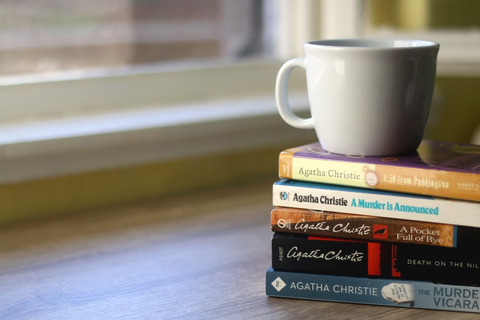The Art of Collaboration
As we prepare for the release of our tenth book together, we realize that, by necessity, we’ve learned a lot about the art of collaboration. Although we’d each been writing individually for over twenty years before embarking on this new chapter of our careers, nothing quite prepared us for the give-and-take of creating novels together.
As with most writing skills, we learned by doing. Book by book, year by year. A decade later, we’re still learning. But we thought this might be a fun time to share the insights we’ve picked up in the course of writing these ten books.
First we lay the groundwork. When writing our solo books, we might allow ourselves to find much of our story after we’ve begun writing, but while collaborating, we take time — a lot of time — to discuss the story and characters before we begin. The time and effort we take at this stage can save us from false detours and confirm we have the same book in mind, although there’s always room for improvisation later. It’s a great opportunity to bounce ideas off each other and start writing with a feeling of forward momentum. Also, our continuous volley of “What if…?” questions gives us some of our best ideas.
We make it our own, even if it isn’t. As we navigate the twists and turns of a thriller, we inevitably pick up plot strands created by our partner and knot them in ways they never could have imagined. The same goes for characters. We’re constantly trying to surprise each other by taking work that the other has done and giving it a new spin, while of course staying true to the overall tone and direction of the book. We think it gives the story an increased sense of excitement. It isn’t always what the other intended, but that’s okay. We have to own each page the same way we do when we’re writing our individual books. This works because we’re such big fans of each other; when we get a batch of pages, we’re excited to see what interesting new things are happening with our characters and story. When we reach the end of those pages, we’re dying to know what happens next. Of course, we then realize we have to write what’s next…
We aren’t afraid to criticize each other. This is probably our most important lesson. If something wasn’t working for one of us, we had to learn to bring it out in the open, discuss it and risk hurting the other’s feelings. This may come easily to some people, but not when you’re dealing with a close family member. Or at least it shouldn’t. We haven’t gotten thick-skinned over the years as much as we just realized it’s all about writing best book possible. If something bothers one of us, chances are that it will one day bother an editor, a reviewer and the reader. The sooner we address any problems, the better. If we’re worried about hurting each other’s feelings, things are going slip by and the book won’t be as good. This leads us to our next working method…
We constantly edit each other’s work. Readers tell us they can’t tell who wrote what in our books, which is probably the best compliment we can get. We think this is due to the fact that we go over each other’s work with a fine-tooth comb (okay, maybe a red pen) at every stage of the process. We do this to make sure that the story and characters are consistent with what has happened earlier in the book. If one of us describes a character as having a southern drawl on page 16, it’s wouldn’t work for the other to mention his New York upbringing on page 350. We also pay attention to writing style and word choice, to make sure we’re writing in one voice.
We’re always prepared to blow up the ending. Although we usually know where we’re headed when we’re writing our books, the story can take on a life of its own by the time we reach the final chapters. It’s not unusual for us to decide that our agreed-upon ending no longer works for us. This can happen with our solo books, of course, but it seems like a much bigger deal when it happens with the collaborations, probably because we’ve spent so much time (maybe a year) discussing our ending and using it to anchor and unify our writing. We’ve learned not to get so attached to our endings that we stop looking for an even better finale that may be out there for us to discover.
Looking over these lessons, we realize most of them are simply techniques we’ve found to better communicate, which is crucial in any creative partnership. As we start writing our next ten books together, we realize we’re nowhere near done exploring new ways to communicate with each other — and our readers — to write the best books we can.
IRIS JOHANSEN is the #1 New York Times bestselling author whose thrillers featuring forensic sculptor Eve Duncan include The Face of Deception, The Search, Hunting Eve, Mind Game and Smokescreen. Her other bestsellers include Chasing the Night, What Doesn’t Kill You, Vendetta, The Perfect Witness and No Easy Target.
ROY JOHANSEN is the Edgar Award-winning and New York Times-bestselling author of The Answer Man, Beyond Belief and Deadly Visions. With Iris Johansen, he has co-authored the Kendra Michaels series that includes Close Your Eyes, Sight Unseen, The Naked Eye, Night Watch, Look Behind You and Double Blind.
The team’s new thriller Hindsight will be released January 7, 2020.

